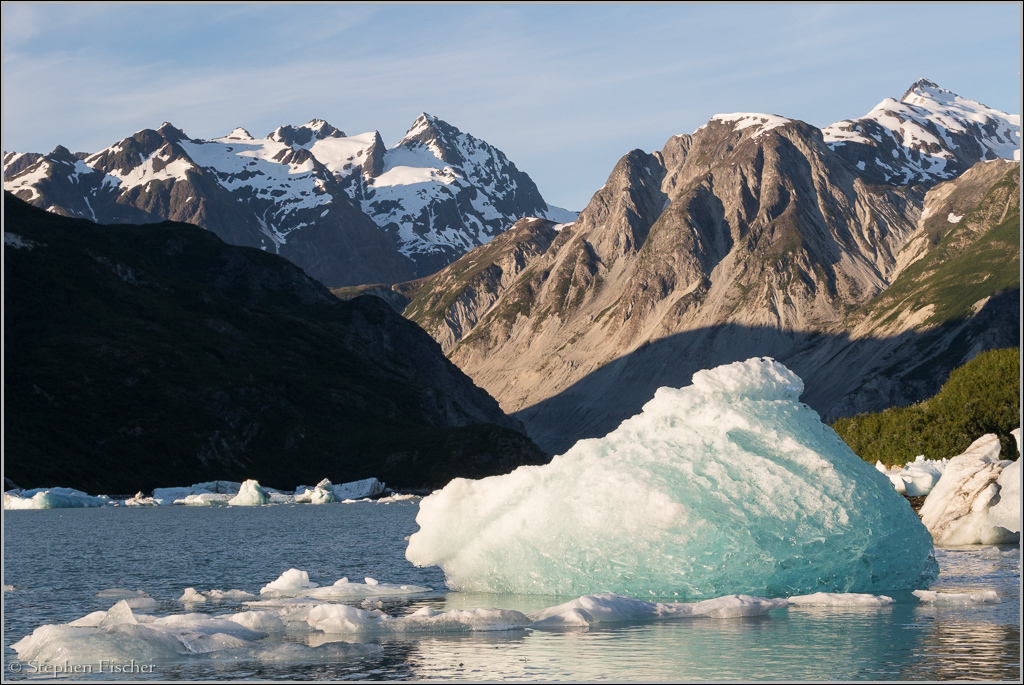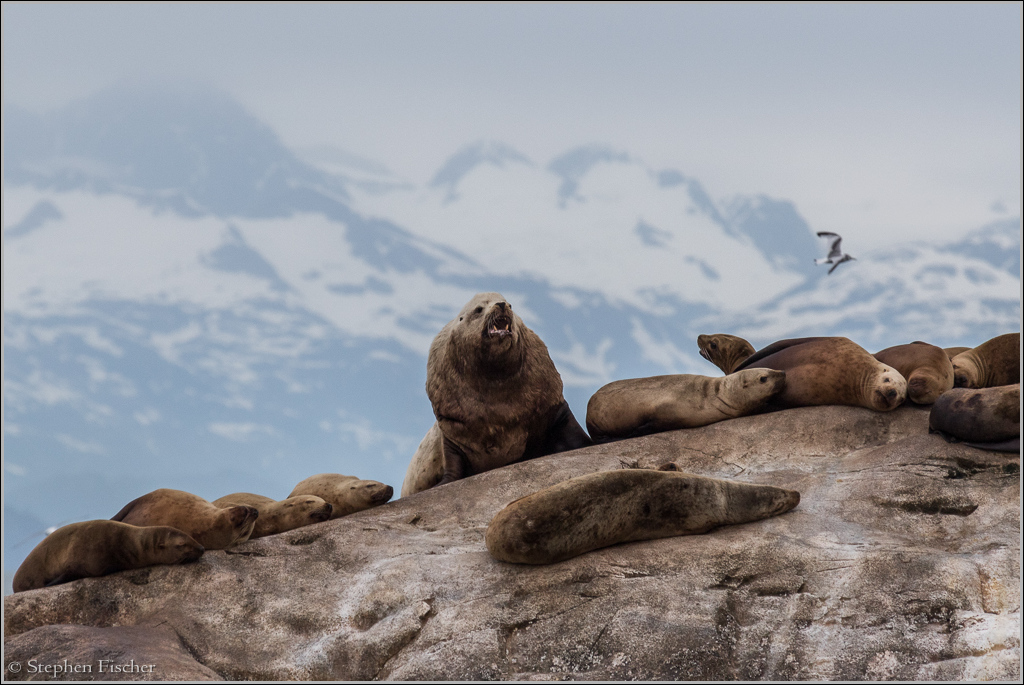Picture of the week
| Previous weeks |
 July
3, 2016 July
3, 2016 |
 June
19, 2016 June
19, 2016 |
 June
12, 2016 June
12, 2016 |
 June
5, 2016 June
5, 2016 |
 May
22, 2016 May
22, 2016 |
 May
8, 2016 May
8, 2016 |
 May
1, 2016 May
1, 2016 |
|
|
|
|
|
|
|
|
 Mar
27, 2016 Mar
27, 2016 |
| Older |

McBride Glacier Icebergs
Icebergs floating out of the small protective bay from the McBride Glacier. Watching the icebergs float off this particular glacier is one of the most dramatic sights I have witnessed. As the tide recedes, the current pulls the bergs floating in the forebay of this glacier through a narrow channel and into the larger Muir Inlet. The current can be extremely strong, causing some of these bergs ranging in size from 1 to 20 feet to tumble through the channel, often colliding with each other along the way. At low tide you can see many of these icebergs temporarily stranded along the beach of the bay, creating a maze of ice that is a wonder to walk through. It is something that looks like you would expect to see in Iceland.
 Myself and two friends (Randy and John) spent 5 days sea kayaking up the
East Arm of Glacier Bay at the end of June, exploring McBride and other facinating
sights (shown to the right just before loading our kayaks on to the day boat
that dropped us off at the base of Mt. Wright). On the second day we camped about a mile short of the
McBride Glacier bay, paddling up to it after dinner, landing at the beach
at the mouth near the end of low tide, while it was still going out, and in
time for some good light for photography at sunset. I used my Canon
EOS 7D mark II with the EF-S 18-135mm f/3.5-5.6 IS STM lens for landscapes,
and an EF 100-400mm L f/4.5-5.6 IS telephoto for wildlife.
Myself and two friends (Randy and John) spent 5 days sea kayaking up the
East Arm of Glacier Bay at the end of June, exploring McBride and other facinating
sights (shown to the right just before loading our kayaks on to the day boat
that dropped us off at the base of Mt. Wright). On the second day we camped about a mile short of the
McBride Glacier bay, paddling up to it after dinner, landing at the beach
at the mouth near the end of low tide, while it was still going out, and in
time for some good light for photography at sunset. I used my Canon
EOS 7D mark II with the EF-S 18-135mm f/3.5-5.6 IS STM lens for landscapes,
and an EF 100-400mm L f/4.5-5.6 IS telephoto for wildlife.
Back at camp around midnight I was visited by an Alaskan brown bear that apprently was just passing through. I was awoken from my sleeping bag by the sound of breaking branches, growls and deep breathing. Not knowing if it was aware of my presence inside my tent, I decided to make myself known and to try to discourage it from coming closer by turning on my headlamp, clapping my hands, and yelling for it to "git!". It seemed to work, as the sound of it faded back into the darkness within about 5-10 minutes. The next morning after breaking camp and paddling away from shore, we spotted what was probably the same bear the visited me that night, ambling along the shoreline, rummaging for food about 100 yards from where we were. Given the typically tight areas between the beach area at high tide and the Alaskan rain forest, there is not much space flat enough to pitch a tent. As a result, wildlife will often pass nearby when the tide is high, given the beach as an easier means for travel, while also providing good opportunities for food in the form of mussels and clams underneath the various rocks along the shore.
Next week I will cover the rest of the trip, including the Adams Inlet and the wildlife we found there.
More images (click to select the larger view at bottom)



All content and images are property of Stephen Fischer Photography, copyright 2010-2016. Last updated: 7/10/2016 ()